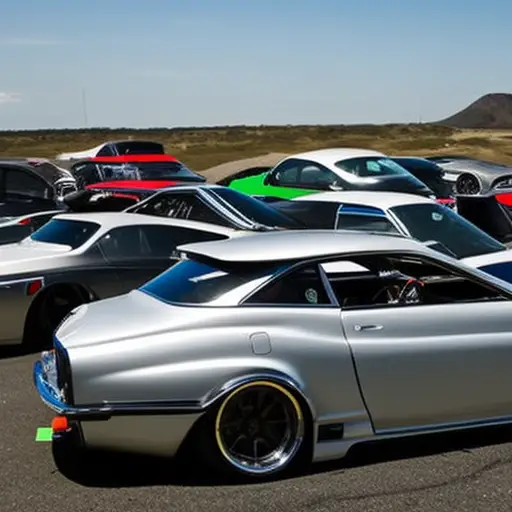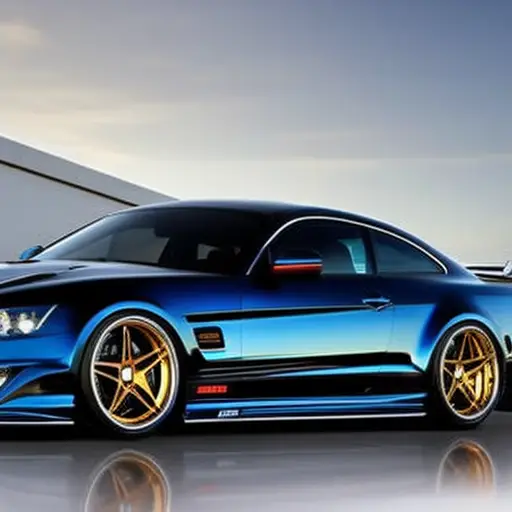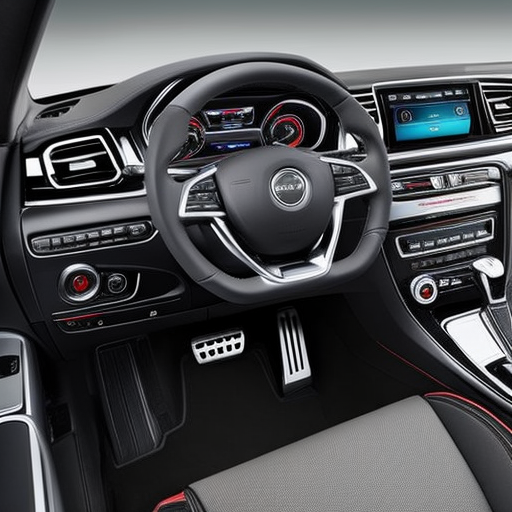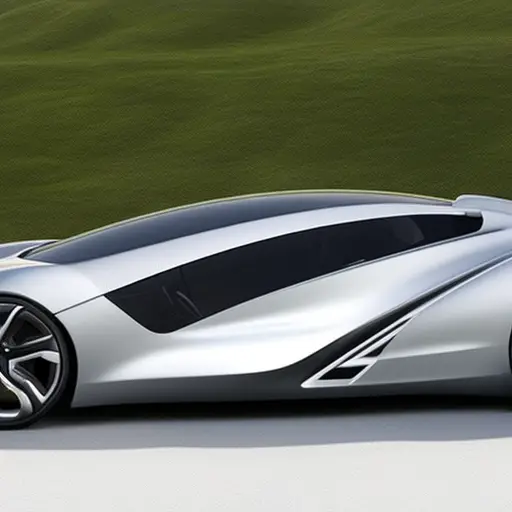Performance Boosting: Turbo Vs. Supercharger

In the world of automotive performance enhancement, the debate between turbochargers and superchargers rages on, akin to the clash of titans. Both devices serve the common goal of increasing engine power, but their methods and impact differ significantly.
This article delves into the technical intricacies and performance disparities of these two power-boosting systems, providing an informed analysis to aid enthusiasts and professionals in making the most suitable choice for their vehicles.
How Turbochargers Work
One of the primary functions of a turbocharger is to increase the air intake of an engine, thereby enhancing its overall performance. Turbochargers operate by utilizing the engine’s exhaust gases to drive a turbine, which then powers a compressor. This compressor, in turn, forces air into the engine, allowing it to burn more fuel and ultimately generate more power.
The efficiency of a turbocharger lies in its ability to harness waste energy from the exhaust and convert it into useful work to increase the engine’s performance without sapping power from the crankshaft, as is the case with superchargers.
Turbochargers are known for their efficiency in delivering power, especially at higher altitudes where the density of air is reduced. Unlike superchargers, which are driven directly by the engine’s crankshaft, turbochargers do not sap power from the engine to function. This makes turbochargers a popular choice for modern engines, as they provide a significant power boost without sacrificing fuel efficiency.
As we delve into how superchargers work, it’s important to note the distinct differences in their power delivery compared to turbochargers.
How Superchargers Work
The supercharger’s function is to increase the air intake of an engine, enhancing its performance by forcing air into the combustion chamber at greater pressure. Superchargers are powered mechanically by the engine, typically through a belt connected to the crankshaft. This mechanical connection means that superchargers provide immediate power delivery characteristics, with no lag in power delivery, making them ideal for applications requiring instant throttle response. However, this direct mechanical link can also affect supercharger efficiency, as it draws power from the engine to function, thereby impacting overall engine efficiency.
| Characteristic | Description |
|---|---|
| Power Delivery | Immediate and linear power delivery |
| Efficiency | Directly driven by the engine, impacting overall engine efficiency |
| Types | Roots, twin-screw, and centrifugal superchargers |
Understanding supercharger efficiency and power delivery characteristics is crucial when considering the best forced induction system for a specific application. Now, let’s explore the key differences in performance between turbochargers and superchargers.
Key Differences in Performance
Superchargers and turbochargers differ in their methods of forced induction and power delivery, presenting distinct advantages and considerations for performance enhancement in automotive applications.
When it comes to fuel efficiency, turbochargers have the edge due to their ability to harness wasted energy from the exhaust stream, thereby improving overall efficiency. On the other hand, superchargers, being mechanically driven, draw power from the engine to function, which can have a slight negative impact on fuel efficiency.
In terms of power output, superchargers have a more linear power delivery, providing seamless acceleration throughout the engine’s RPM range. Turbochargers, however, typically exhibit a lag known as turbo lag, where the power delivery is delayed before reaching its peak. This can affect engine response and torque delivery, giving superchargers an advantage in responsiveness and instantaneous power delivery.
Ultimately, the choice between a supercharger and a turbocharger depends on the specific requirements of the vehicle and the desired balance between fuel efficiency, power output, engine response, and torque delivery.
Pros and Cons of Turbochargers
Discussing the pros and cons of turbochargers seamlessly extends the comparison of forced induction methods and their impact on performance in automotive applications. Turbochargers offer exceptional efficiency by utilizing wasted exhaust gases to compress intake air, resulting in increased power without significantly affecting fuel consumption. However, turbo lag, which is the delay in power delivery due to the time required for exhaust gases to spool the turbo, can affect throttle response. Moreover, the complexity of turbocharger systems can lead to higher maintenance costs and potential reliability issues. On the other hand, superchargers, while less efficient due to sapping engine power to drive the compressor, provide immediate power delivery with no lag, enhancing overall engine responsiveness. Superchargers are also known for their reliability and durability due to their simplistic design. Below is a comparative table outlining the key pros and cons of turbochargers and superchargers:
| Aspect | Turbocharger | Supercharger |
|---|---|---|
| Efficiency | High | Low |
| Throttle Response | Laggy | Immediate |
| Reliability and Maintenance | Potential issues and higher maintenance costs | Reliable and low maintenance |
Pros and Cons of Superchargers
When considering the pros and cons of superchargers, it is important to highlight their capability to deliver instant power, which can significantly enhance engine performance.
Additionally, superchargers have the potential to increase engine efficiency, leading to improved overall vehicle performance.
However, it is crucial to be mindful of the potential for heat buildup associated with superchargers, as this can affect the engine’s longevity and performance.
Instant Power Delivery
One advantage of using a supercharger for instant power delivery is its ability to provide consistent and immediate boost throughout the entire RPM range. This results in excellent throttle response and power efficiency, making the driving experience more exhilarating.
The supercharger’s seamless power delivery eliminates any lag, ensuring quick acceleration and enhanced performance. Additionally, the instant surge of power creates a thrilling sensation, amplifying the overall driving enjoyment.
The immediate response to throttle input gives drivers a heightened sense of control and connection with the vehicle, instilling confidence and satisfaction. Moreover, the continuous power delivery across the RPM range generates a visceral and engaging driving experience, captivating enthusiasts and casual drivers alike.
Increased Engine Efficiency
The supercharger’s impact on engine efficiency presents both advantages and drawbacks in the realm of performance boosting. While superchargers significantly increase power output by forcing more air into the engine, they can also lead to decreased fuel efficiency due to the additional load on the engine. The table below provides a concise comparison of the increased engine efficiency aspects of superchargers.
| Aspect | Supercharger |
|---|---|
| Increased Power | Significant power boost at lower RPMs |
| Fuel Efficiency | Can lead to decreased fuel efficiency |
| Response Time | Immediate power delivery |
| Maintenance | Requires regular maintenance and belt replacement |
| Cost | Generally less expensive than turbochargers |
The increased power from superchargers enhances performance, but the trade-off may be reduced fuel efficiency. This trade-off should be considered when choosing a supercharger for performance boosting.
Next, let’s delve into the potential for heat buildup.
Potential for Heat Buildup
The supercharger’s impact on engine efficiency can intermittently lead to heat buildup, a factor that influences the overall performance and durability of the system. Heat dissipation becomes crucial in managing the potential drawbacks of superchargers, as the increased air compression generates more heat within the engine.
This heat buildup can lead to several issues, such as reduced engine efficiency, potential damage to internal components, and the risk of pre-ignition or detonation. Effective cooling systems are essential to counter these challenges, ensuring that the supercharger operates within optimal temperature ranges.
Enhancements in cooling technology play a vital role in mitigating the heat buildup, safeguarding the engine’s longevity and maintaining consistent performance.
- Reduced engine efficiency
- Potential damage to internal components
- Risk of pre-ignition or detonation
Cost and Installation Considerations
When considering the performance-boosting options of turbochargers and superchargers, it is essential to analyze the cost comparison, installation complexity, and maintenance requirements.
These factors play a crucial role in determining the overall feasibility and effectiveness of each option.
A thorough understanding of the cost and installation considerations is vital for making an informed decision regarding the selection of a turbocharger or supercharger for enhancing vehicle performance.
Cost Comparison Analysis
A comprehensive cost analysis comparing the expenses and installation considerations of turbochargers and superchargers is essential for making an informed decision on performance boosting. When evaluating the cost of each option, it is important to consider not only the initial purchase price but also the long-term expenses associated with maintenance, repairs, and potential modifications. Additionally, installation costs can vary significantly based on the complexity of the system and the expertise required for the installation process. Factors such as the need for additional supporting modifications and potential warranty implications should also be taken into account when assessing the overall cost of each performance boosting option.
Moving on to the subsequent section about ‘installation complexity and time’, it is crucial to understand how these factors can impact the overall decision-making process.
Installation Complexity and Time
Considering the cost and installation considerations discussed previously, it is imperative to delve into the impact of installation complexity and time when comparing turbochargers and superchargers for performance boosting.
When comparing installation time, superchargers are generally easier to install due to their simpler design, often taking around 4-6 hours. On the other hand, turbochargers are more complex and can take anywhere from 8-14 hours for installation.
The complexity comparison also extends to the efficiency analysis, where turbochargers may require more intricate modifications to the exhaust system and additional components for intercooling. While superchargers are simpler to install, their performance comparison may vary depending on the specific application, as they can be less efficient at higher RPMs compared to turbochargers.
Therefore, the installation complexity and time are crucial factors to consider when deciding between a turbocharger and a supercharger for performance enhancement.
Maintenance and Longevity
Delving further into the comparison between turbochargers and superchargers for performance enhancement, it is essential to examine the maintenance requirements and longevity, particularly in relation to the previously discussed cost and installation considerations.
When considering maintenance schedules and longevity, both turbochargers and superchargers have specific requirements that impact their durability. The comparison includes factors such as the frequency of oil changes, potential wear on components, and the overall lifespan of the system. These aspects play a crucial role in determining the total cost of ownership and the ongoing maintenance commitments for the vehicle owner.
Understanding the durability comparison between turbochargers and superchargers is vital in making an informed decision about which performance-boosting method is most suitable for individual needs.
Next, let’s explore the factors that can aid in making the right choice.
Making the Right Choice
When considering the choice between a turbocharger and a supercharger for performance boosting, it is important to carefully evaluate the specific needs and goals of the vehicle in order to make the right decision. Factors such as the vehicle’s intended use, desired power gains, and budget will play a significant role in determining the most suitable option.
| Consideration | Turbocharger | Supercharger |
|---|---|---|
| Power Delivery | Lag at lower RPM, significant power boost in mid to high range | Immediate power delivery, consistent power across RPM range |
| Efficiency | More efficient, harnessing wasted exhaust gases | Slightly less efficient due to parasitic load on the engine |
| Installation Complexity | More complex installation due to additional components | Simpler installation, fewer additional components |
| Cost | Generally lower initial cost, potential for higher long-term maintenance costs | Generally higher initial cost, potentially lower long-term maintenance costs |
Frequently Asked Questions
Can Turbochargers and Superchargers Be Used Together for Even Greater Performance?
Combining turbochargers and superchargers can provide substantial power gains, but it’s vital to consider the efficiency impact. The complexity of dual forced induction systems can lead to reduced reliability and increased maintenance, necessitating careful engineering and tuning for optimal performance.
What Impact Do Turbochargers and Superchargers Have on Fuel Efficiency?
The impact of turbochargers and superchargers on fuel efficiency is significant. Turbochargers use exhaust gases for power, increasing efficiency, while superchargers directly draw power from the engine, leading to a slight decrease in efficiency.
Are There Any Special Maintenance Requirements for Turbochargers and Superchargers?
Maintenance tips for turbochargers and superchargers are crucial for optimal performance tuning. Regular checks on boost pressure control, heat management, and lubrication systems are essential. Following manufacturer guidelines and using high-quality components is recommended.
Can Turbochargers or Superchargers Be Installed on Any Vehicle, or Are There Specific Requirements?
When considering installation of turbochargers or superchargers, it’s crucial to assess the vehicle’s compatibility and installation requirements. Factors such as engine type, space constraints, and potential modifications must be carefully evaluated to ensure successful integration.
How Do Turbo Lag and Supercharger Lag Affect the Driving Experience, and Can They Be Minimized?
Minimizing lag in turbochargers and superchargers is crucial for optimal engine responsiveness. Driving techniques and performance tuning can help reduce lag. Understanding and adjusting for lag can significantly enhance the driving experience.
Conclusion
In conclusion, the choice between a turbocharger and a supercharger depends on the specific performance goals, budget, and installation considerations of the vehicle.
Both systems have their own advantages and disadvantages, and it is important to carefully weigh these factors before making a decision.
As the saying goes, ‘Different strokes for different folks,’ and this certainly applies to the diverse needs and preferences of automobile enthusiasts when it comes to performance boosting methods.





